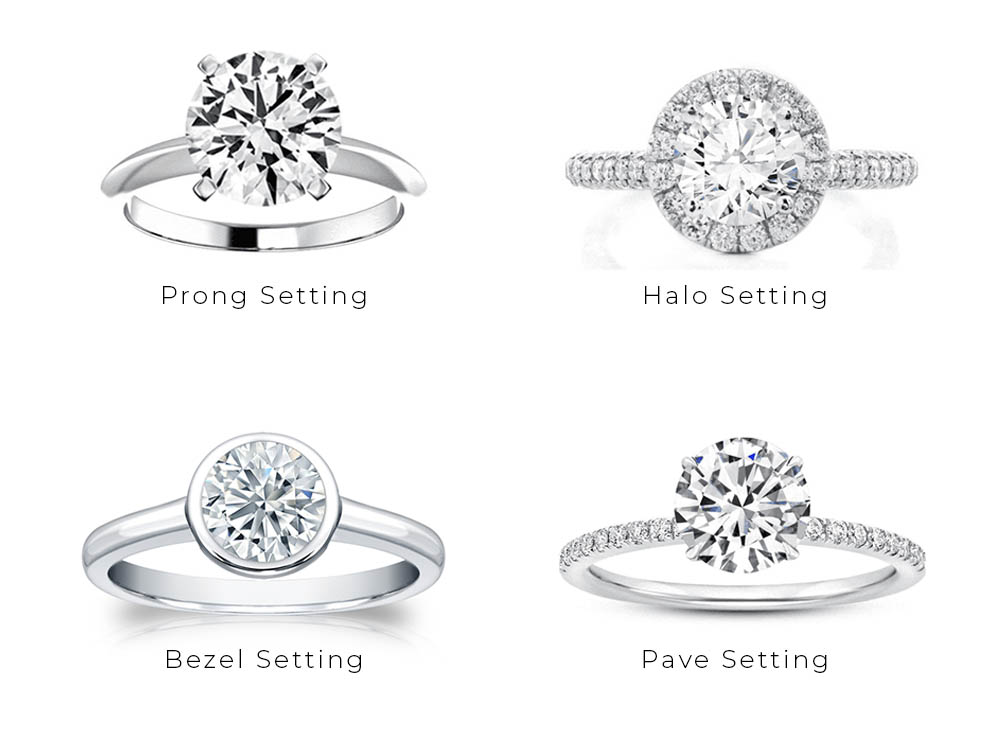The Main Principles Of Engagement Rings
The Main Principles Of Engagement Rings
Blog Article
The Definitive Guide to Engagement Rings
Table of ContentsThe Best Strategy To Use For Engagement RingsSome Ideas on Engagement Rings You Need To KnowGetting My Engagement Rings To WorkThe Ultimate Guide To Engagement RingsThe Main Principles Of Engagement Rings 6 Simple Techniques For Engagement Rings
Tension-style settings additionally supply much better safety for the gems. Many tension-style setups are made for round great diamonds or other rounded gemstones, but they can be changed to fit several various other forms. The setup can additionally be changed to have accent gems around the centre rock or to enable for a side rock on each side of the centre rock.Is not breakable and uses well. Can be individualized. Produces an optical impression of the centre gems awaiting the air. Have a modern-day design that is full of poise and elegance - engagement rings. Easy to cleanse and preserve. If it has prongs, they can come to be loosened with wear. This is easily corrected by having the ring frequently cleansed and examined by a jeweller.
The Definitive Guide for Engagement Rings
The first ring with a true tension setting was made in Vreden, Germany in the 1970s. Ursula Exner and widely known sculptor Walter Wittek collaborated to design and make this very first ring. In the adhering to years, other jewellers made their very own stress setups, as well as the much more safe and secure and practical tension-style setups.
This offers the ring a basic, yet trendy appeal that works well for both males and females's wedding celebration rings, as well as engagement rings. The flush setting is often also called a gypsy setting. We can not say without a doubt how it came to have that name, but maybe it is because the setting represents a complimentary spirit.
Engagement Rings Can Be Fun For Anyone
Flush settings work well for round, square or rectangle-shaped gemstones, but they can be difficult to adjust to particular expensive cuts, for instance, a heart-shaped ruby. Keeps the gemstones secure and protected.
Advises the owner to grow a complimentary spirit (engagement rings). Because the gems are embeded in the shank, they receive a restricted quantity of light and generate much less sparkle. Usually not practical for heart-shaped treasures and a couple of various other treasures with fancy cuts. Rings with flush or gypsy settings have been around because the late 1800s.
Solitaire involvement rings find more information have just one centre gems on a plain band. Numerous other involvement rings, though, also have accent gemstones.
What Does Engagement Rings Do?
There are 4 settings that are commonly used to hold accent gemstones. The castle setup earned its name due to the fact that from the side it appears like the battlements in addition to a castle wall. This setup is additionally often called the scallop setup. Castle settings are made directly on the shank of the ring.
The prongs in a castle setup can be right up and down with easy rounded ideas or they can be reduced at an angle to ensure that they appear like fishtails. These fishtail prongs can also be called French cut prongs. Castle settings are extremely functional. They can be set totally around the shank, just positioned throughout the ring's shoulders or used to create a halo around the centre gems.
The Facts About Engagement Rings Uncovered
If it is well made, the low scalloped edge of the castle setting can additionally develop an optical impression. It enables the sides of the gemstones to be easily seen and develops the perception that the gems are being held in an invisible setup.
Rises light refraction and sparkle. Catches interest with its sparkles. Develops the impression of an unnoticeable setting. Has a sophisticated appeal. Easy to clean and requires little upkeep. The tiny read prongs can end up being loose. We advise that rings with the castle setup be cleaned occasionally by a jeweler, to make sure that the prongs can be examined.
The prongs on a castle setting can catch on clothes, but this is unusual due to the fact that the prongs are smooth. The castle setup can be used to make stunning eternity rings. The initial infinity rings were developed in the 1960s. Those original rings, like infinity rings today, have a row of closely set gemstones totally surrounding their shank.

The Ultimate Guide To Engagement Rings
The grain setting is a really safe setup. One drawback of the bead setting is that the gems get less light due to the fact that they are established down in the channel.
Every treasure in the bead setup is bordered by 4 glossy grains that are degree with the top of the shank. These grains catch the light and emit their own you could look here shimmers in every direction. The grains' shimmers with each other with the radiance and shines generated by the accent gems bring the grain readying to life and offer it constant shimmers.
They can utilize it to make infinity rings, as well as to embellish the basic shank or more detailed split shank that some involvement rings have. In the fundamental bead setting, the accent gems are embeded in one straight line. Occasionally, though, jewelers will certainly enhance the shimmer on an engagement ring by including two or even more parallel lines of bead set treasures.
Report this page